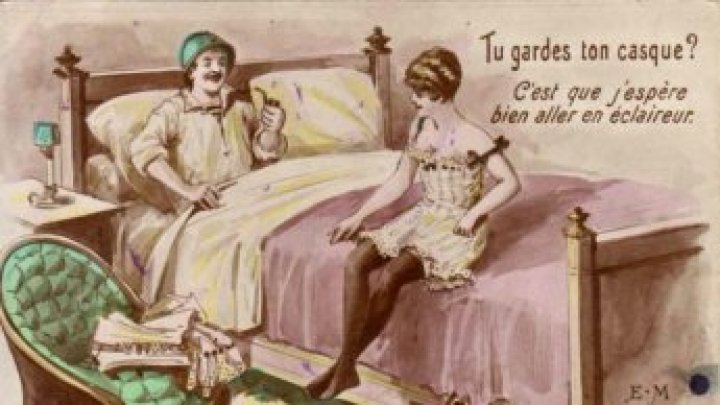
Prostitution and war often go hand-in-hand. But this is perhaps most true of the First World War, where even the French government played a part in the sex industry – a legacy that continued almost to up to today.
“You could find anything you wanted in the brothels in the surrounding area and at the camps. It was a mêlée, a hard, dangerous and disgusting business. Fifty, sixty, up to a hundred men of all colours and races to see every day, all under the constant threat of air raids and bombardments.”
These are the words of Dr Léon Bizard in his memoirs of the First World War. He was describing the daily routine of a hidden army operating in the shadows of the one fighting on the front lines – the thousands of sex workers that catered to the soldiers of the Great War.
‘Where there are soldiers, pimps quickly follow’
Prostitution flourished from the moment fighting began in the summer of 1914 – supply rising to meet the demand of soldiers who, far from their families and plunged into the hell of war, found themselves in need of female companionship.

“You can die at any moment, from one second to the next. When there is the opportunity to respond to desire, there are no restraints,” explains Lieutenant Colonel Christian Benoit, author of a book on the military and prostitution entitled ‘The Soldier and the Whore’.
For centuries, soldiers and sex workers have shared history, he tells FRANCE 24. In fact, he says, they are inseparable.
“This is explained by the fact that the armies are groups of young, unmarried men who have the need occasionally to be with a woman, not always for sex by the way, but also for company.
“This mass of men provides clients for prostitution. Where there are soldiers, pimps quickly follow.”
With the mobilisation of vaster quantities of men than had ever been seen before, the phenomenon reached new heights in the First World War.
Prostitution became rife in areas close to the front lines, as well as in nearby towns and villages, says Benoit.
“Some of the inhabitants took up prostitution. Others were also brought in. These were apocalyptic scenes, real slaughterhouses.”
Disease quickly spread – an estimated 20 to 30 percent of men contracted syphilis during the war, including both soldiers and the civilian population.
France’s military-run brothels
Soon, the military doctors became concerned and during the summer of 1915, the French army began taking measures to stop the scourge, setting up clinics to treat infected men.
“The doctors took the opportunity to interrogate the men to find out who they caught the disease from so they could find the woman in question and treat her,” says Benoit. “But [the men] were often unable to remember.”
Eventually, the French state took an even more drastic step and began taking direct control of, or even setting up, brothels across the country.

Known as Military Campaign Brothels (BMCs), they had already been used by the French army in the previous century during the conquest of Algeria – but never before on home soil.
These appeared in particular near training camps, often set up in the countryside “where there was no regulated prostitution or medical screening”, says Benoit.
Not all of France’s allies took such a tolerant view. The US, for example, banned its soldiers from visiting brothels entirely.
“They preferred to control their soldiers with the following system: any man who had sex had to report it within three hours at medical station for prophylactic treatment. If they got sick without following this procedure, they were fined half their pay.”
This approach did not always have the desired effect: when the Americans landed in France at the port of Saint-Nazaire, their attendance of illegal brothels contributed to the spread of syphilis in the city.
A lasting legacy
The end of the combat in November 1918 inevitably brought a decline in prostitution. But the French military’s dalliance in the murky world of prostitution continued long after the last shots of World War One were fired.
It continued to operate brothels right up until the end of the 20th Century.
“It was outside the law of course,” says Benoit, “but the use of subcontracting – the army would start a relation with a local pimp who would supply the girls – gave the system its ambiguity.”
BMCs were used by the army in North Africa and Germany during the Second World War and, despite the outlawing of brothels in France in 1946, during the Indochina War of the late 40s and early 50s.
Right up until 1978, four BMCs were being operated in metropolitan France, serving the French Foreign Legion. The final state-run brothel — in Kourou, French Guiana — did not close its doors until 1995.
“A local pimp had filed a complaint for unfair competition,” explains Benoit.

